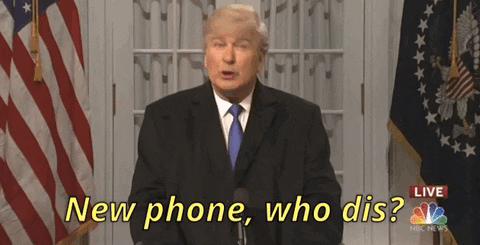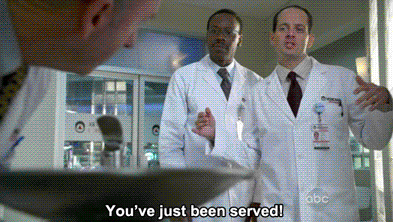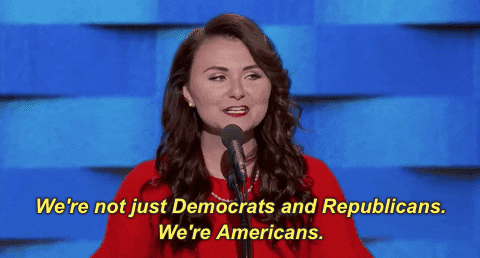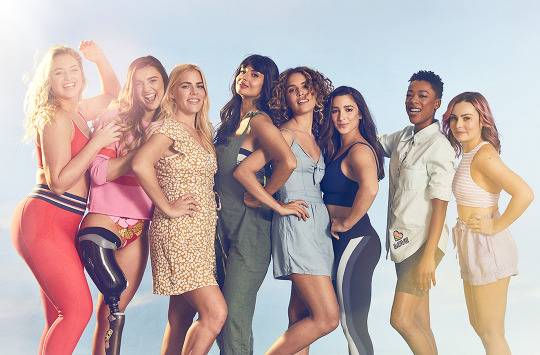Don't wanna be here? Send us removal request.
Text
Gendered Spaces vs. Genders in Spaces
The idea of advertising is to cater to the populations that inhibit certain areas. A billboard in the rural country will cater to the demographic of farmers and needs they might encounter to run successful businesses. Billboards in a major city will cater to the materialistic consumer identities people in those cities hold. Certain spaces have been gendered by the types of advertising are portrayed. When catering to men in a specific area, that space becomes gendered and excludes women from being considered equal amongst men or inclined to be active members in this space (Rosewarne 17). Areas become gendered even when a majority of billboards have women on them. Women have been the object of gaze for men for decades. Especially in public spaces where everyone can view the object of a male’s gaze, women are represented in ways that only can be seen to appease masculine wants and tendencies. In the image below, the women are there to serve the men and satisfy any fantasies they have even when just going to get a beer.

The women’s revealing clothing and posture suggest that they are the objects of a man’s desire. This billboard will draw men in expecting this kind of appearance and attentiveness from the women working at this establishment. These types of billboards will make their way into spaces that cater towards men which can be identified as planning decisions. If a majority of men seem to occupy a space, women will most likely be used as decoration in that public space for advertising towards men (Rosewarne 18). This type of advertising catering to one specific audience creates gendered spaces in public spaces where both genders can view them.
Los Angeles is home to hundreds of billboards of all different messages and spaces. In an area that houses all different races, cultures, social classes, and sexual orientation, there is no room for gendered spaces. In terms of the urban planning and city beautification efforts, women began the removal of advertising from billboards to focus on the aesthetics and social issues that these spaces held (Gudis 170). In 2016, Mayor Garcetti started new planning for the urban areas such as Koreatown to incorporate more artwork into the public space. These efforts help combat any form of gendered advertising in these spaces inhabited by all and prevent commercialism from taking over the identity of the local communities.


Artwork can be gendered but with the Beautify Earth campaign they are focusing on the immediate impact of art that can be made on the streets. Similar to the efforts made to protect the scenic Redwood Highway from commercialism (Gudis 179) , the scenic beauty is preserved and not distracted from, instead illuminated with the art of local artists. It is a common risk that man face that if they get involved with cuty beautification they will be looked at as feminized (Gudis 175). This notion that beautifying a city can only be a woman’s job has become antiquated with efforts from our male mayor and community members. Gendered billboards and spaces that create the male gender as superior still exist, but artwork that focuses on overarching issues in our community take precedence. These efforts eliminate any efforts to create billboards that cater to men or use women as the object of the male gaze. In states like Hawaii where commercial advertising of billboards is prohibited, street beautification like the Beautify Earth campaign could be an approach to appealing to community interests and spreading art, love, and color.
0 notes
Text
Trump Impeachment Inquiry Timeline
July 25, 2019:
The Trump Impeachment Inquiry can be traced back to prior relations with the United States and Ukraine. However, the actual inquiry began over a phone call between President Donald Trump and Ukraine’s President Volodymyr Zelensky that took place July 25, 2019. Trump is said to have called Zelensky to congratulate on his success in parliamentary elections. However, on this call White House Reports state that Trump asked Zelensky for a favor regarding foreign aide to Ukraine from the United States in exchange.

Trump Phone source
August 12, 2019:
Complaints from a whistleblower were released on August 12, 2019 regarding the conversation that was had between Trump and Zelensky. The whistleblower reported that Trump abused his power as President to get foreign aid for the upcoming 2020 election and to find information on Former Vice President’s son Hunter Biden and his relations to Ukraine. These complaints were seen as credible and urgent to be sent to Congress immediately.

Whistleblower source
September 18, 2019:
In August, the reports that a whistleblower had information on Trump’s conversation were released. In September, Trump’s involvement with Ukraine for foreign aid is confirmed. The whistleblower reported that a promise was made between President Trump and President Zelensky. The complaint from the whistleblower was assigned as urgent and credible from the House Intelligence Committee.

Promise source
September 24, 2019:
Nancy Pelosi, House Speaker, makes the official announcement that the White House will be conducting a formal impeachment inquiry on Trump. She went on to say that the actions that President Trump has committed in regards to abusing the power he has as president must lead to an impeachment because he has violated the Constitution. She says how he has neglected national security, oath to office, and the integrity of those that voted him into office in the first place. Not only was Trump offering U.S. military aide as an exchange for a favor but he was doing it to find information on fellow American, Hunter Biden, Joe Biden’s son. Hunter Biden was on the board of one of Ukraine’s largest natural gas companies and Trump wanted information as to what his role was and why his father Joe Biden, former Vice President was doing to support his business interests ahead of the upcoming election.

Nancy Pelosi source
September 26, 2019:
President Trump asked staff members who they thought provided information to the whistleblower about his call. He made implications that the person that was revealing private information must be a spy and “spies were dealt with differently” at one point in time. Trump continued that the news media was “crooked” for trying to make the whisteblower’s explosive complaint wide spread. Similar to a witch hunt, had the time periods been different, the whistleblower would have been tracked and found like the witch hunt referred to in the GIF below.

Hunt Source
September 30, 2019:
The House Democrats ultimately give President Trump’s personal lawyer Rudy Giuliani a subpoena. Giuliani then has until October 15, 2019 to provide three different House Committees with documents. If Giuliani does not agree with these terms, the subpoena states that this would be evidence of how the impeachment inquiry would be obstructed. The subpoena is asking that Giuliani provide all communication exchanged between Trump and the Ukraine in regards to his scheme with providing U.S. military aide that would mess with the 2020 U.S. Presidential election. This consists of all phone calls, text messages, emails, and lines of communication used between the two.

Subpoena source
October 6, 2019:
A second whistleblower comes forward with more information to confirm that what Trump was saying in his phone call with the Ukrainian President was in violation of the Constitution and far past his range of authority. The second whistleblower is also being represented by the same attorneys as the first. The whistleblowers coming forward upsets Trump and he states that their efforts should be recognized as treason. The media has been all over trying to get as many sources to confirm accusations against Trump and with the second whistleblower coming forward the outcome of the inquiry is not looking good for Trump.

Two Whistleblowers source
October 9, 2019:
Two of Rudy Giuliani’s associates, Lev Parnas and Igor Fruman, were arrested for still being a part of the investigation team in Ukraine on Hunter Biden’s role there. This indictment brought awareness to how much people are pressuring Ukraine. It also didn't accuse Trump of any of his wrongdoings. This new indictment shows the first criminal implications of the foreign policy Giuliani pushed on Trump.

Rudy Giuliani source
October 31, 2019:
The House of Representatives divided by Democrats and Republicans came together to decide the set of rules that would be taken place to fulfill this impeachment inquiry. Some of the things they discussed was how the public was going to attain the information as the impeachment takes place and how the President will be able to defend himself. Although both parties had to come together to create a guideline for what the impeachment should look like today, there are still many differences on the events taking place. Republicans are still continuing to denounce the inquiry that is labeled as secretive and unfair. Democrats stand by the fact that Trump was trying to manipulate the upcoming election and did so by attaining information from an illegal foreign power perspective.

Americans source
November 13, 2019:
The first public hearing took place on November 13, 2019. One of the top American diplomats in Ukraine confirmed accusations that Trump was talking about investigations in exchange for military aid. Trump continues to deny that he had this conversation when discussing military aids between the U.S. and Ukraine. He continues to refer to the hearings as a scam. As of November 11, 2019, the polls show that almost half of Americans want Trump to be impeached and removed. Democrats in the polls voted as high as almost 85% to see Trump impeached and removed. Republicans poll votes show only around 9% want him impeached and removed. The decisions from both parties can be seen directed to the upcoming election on how the Democrats would want to get rid of Trump before he could be reelected or how the Republicans want him to stay so that another Republican would be in office. However, most Americans don't know what or who to believe because information can be found anywhere on the Internet whether it is true or not. With the rise of partisan news and social media, the line between facts and opinion based commentary is blurred for the people to choose a side or know whether or not this is what is best for the country. This is the first look that the public has to what is being said and discussed in the hearings.

Impeachment source
0 notes
Text
A Real Woman’s Fashion
Fashion was once something that was aimed to reflect a small percentage of the world’s demographic, 5’10” girls that were less than a 100 pounds. Now with progressive efforts, men and women have realized that everyone should have the ability to see themselves be represented in fashion but also create their own identity performance through fashion. The difference with featuring real women as models in fashion is that “they are defined by more than their image, where the professional model has become their image” (Rhodes 209). This has become a trend amongst fashion brands to incorporate people, specifically women, that resemble more than just beauty, such as athleticism, talents, intelligence, and ability.

An example would be the AerieReal campaign, featuring actresses such as Jameela Jamil, Busy Philipps, and Samira Wiley, Paralympian Brenna Huckaby, Artist Cleo Wade, Olympic Gymnast Aly Raisman, and YouTuber Molly Burke. Aerie is using these women to show that these people we look at as invincible celebrities are also real people. For the artist and YouTuber, who may not be as well known, Aerie is showing that they can also turn ordinary people into celebrities (Rhodes 206). It is important for brands to relate to the average woman because the average woman is an athlete, an artist, an inspiration, hardworking, ambitious and so much more. Jameela Jamil was later attacked because this campaign was just a ploy to show their inclusivity when in reality the brand did not offer a range of plus sized clothing for “real women.” Jamil is known as a body inclusive activist, yet no overweight woman was included into the campaign, most likely due to their limited range of sizes. Including “real women” into these contemporary fashion campaigns only creates the idea of a real woman as more complex and an ideal that still a lot of women can't attain. The campaigns that do show and resemble the real body types that women have, never really circulate like the campaigns with the same cookie-cutter pretty, skinny white girl because the industry likes the idea of perfection being supreme. With these stereotypes and selected normal people to be featured in these ads and campaigns, not everybody is being represented and not everybody can identify with the women being called “real women.”
People have created their own identities through their fashion and with the rise of technology came the rise of blogs on fashion. Fashion blogs help encourage self-expression not only through the clothing one wears but also through images (Rocamora 411). Anybody could be at home and post the clothing they are wearing for an event, for self-confidence, for work, and to inspire others. Not only are fashion blogs an outlet for free expression but it also builds a community and following for people that have the same fashion interests as you. Technology and computers specifically have taken control of how women look at themselves (Rocamora 418). With the expansion of the internet and blogging, people turn to YouTubers for videos often titled “Fashion Haul,” “Get Ready With Me,” “Everyday Make Up Look,” and many more, where YouTubers use their cameras as a mirror, try on clothes and put on make-up. The computer screen and camera have not replaced the mirror but it has grown into a new tool for women to view themselves through. Fashion blogs have become a space that women turn to to create their own norms for fashion since the industry makes it look a certain way that doesn’t include the average body type or style. This type of fashion in the form of fashion blogs isn’t supposed to follow the fashion that the elite are producing or be created in favor to the male gaze, it is supposed to be a fashion that can change and be unique for each blogger (Rocamora 422).

A fashion blogger that I follow is Emily Herren. Her Instagram and YouTube channel are under the same name as her blog, Champagne and Chanel. This image shows her using her mirror as a tool to show her followers the new dress she is wearing and the description in the caption acts as a mini, quick blog about her newest piece of clothing. She dresses pretty modest and professional, which is why I am drawn to her blogs for future inspiration when I get into the workforce. The fashion elites are creating fashion that is revealing, sexy, and breaking from the norms and Emily’s blog is showing that traditional and modest clothing can still be creative and represent your personality. Fashion blogs encompass the fashion women want to see for themselves. They empower women to create a platform for the kinds of fashion they want to see in society when the fashion industry isn’t recognizing them. This isn’t really a market that men have dived into because they aren’t the ones being subjected by the male gaze or society telling them that what they wear defines them.
0 notes
Text
Advertisements: Pros and Cons
Advertising has the power to share messages, appeal to consumers, and most importantly for companies, sell their products. There are both good and bad types of advertising. Good advertising includes ethos, pathos, and logos to connect their product with values that align with societal values.
The Levi’s ad “We are all Workers” in Sarah Banet-Weiser’s article focuses on the rebuilding of the town Braddock, Pennsylvania with music and images that reflect a historical narrative of American pioneers building America. This ad focuses on primarily men building the town, a common American narrative that it is a man’s job to fix the economy and the nation that we live in (Banet-Weiser 91). It is as if only a man would be able to fix the economic crisis that has ruined businesses and infrastructure. In relation to logos, these ads utilize the message they are able to tell with their product. This advertisement is about much more than a pair of jeans. Banet-Weiser argues that although there are contradictions with how the ad focuses on masculinity and selective history to sell their product it is also “this kind of disconnect or contradiction that makes the ad campaigns so successful in an emotional or affective register” (101). The logos in this ad was successful because it related the brand to the current economic crisis that people were experiencing. In a sense, the Levi’s ad was used to empower men and make it their responsibility to fix the world we live, when women are just as capable. Another example of logos from a female perspective was the Always campaign “Like A Girl.” It involved interviews with women and men of all ages to enact what doing something like a girl meant. This campaign shows that women are just as capable and have the ability to perform to the highest of their abilities. This includes being able to build something, fix the economy, and change the American pioneer narrative that only men are cut out for the job.

An attempt at good advertising was Nike’s Pro Hijab product. They were creating a product that made Muslim women athletes a possibility (Bahrainwala 2). Nike created this product to enable participation from Muslim women in sports but other companies that had created Hijabs prior to Nike were part of those Muslim communities and knew the various types and coverage needed by these women. Nike was just creating their version of the Hijab to create inclusivity. This was an opportunity for Nike to show that they were a global company that could provide for athletes around the world and make a profit from it. Nike didn’t create anything new because these sport Hijabs had already existed in the Western world (12). This advertising campaign for the Pro Hijab product looks and sounds a lot like making profit off of a product that is centered around whiteness and has no connection to actual Muslim women designers or Muslim women or athletes working in Nike (13). They were a little blind to think that creating this product would automatically make it the ethically correct thing to do for a part of the athletic population. Although they didn’t use whiteness as an advertising factor visually. Some other advertisers have been blind enough to do so like Nivea, the skincare brand. Nivea created a campaign for one of their products with the specific wording “white is purity” on the cover. Although their context may have been meant to be taken differently, the literal wording implies that to be white or light skinned is the highest form one can be. This excludes a majority of the world’s population, especially when this ad was promoted to people in the Middle East.

Although, some ads think that their messages are clear and will be interpreted in a certain context it is important to know that a specific group of people is not left out from the ad using logos. Efforts in creating an ad must be with the right intentions and support from certain communities and not be used to commodify a product or demographic.
0 notes
Text
(Sit)com and Culture Cartoons
Prior to reading these articles and learning about cartoons, I have never watched a single episode of “The Simpsons” or heard of the show “The Boondocks.” Growing up, my parents were aware that these television shows were telling real stories about real people by portraying it in a cartoon form and wanted to keep what my siblings and I watched light-hearted and positive. Once I got to an age where my parents allowed me to watch whatever I wanted, I kind of lost interest in cartoons and, just like the masses, considered them to be just for children. Critics and general assumptions have changed due to these shows that once were just categorized cartoons as created for children and to not be taken seriously.
These two shows broke stereotypes for what the traditional American families were like and allowed this genre of sitcoms to expand. Rex Krieger writes in his article on The Boondocks that “unlike the sitcom tradition of limited numbers of characters and settings, animated form gives the writers and animators freedom to open the genre outward from the typical domestic setting” (Kreuger 318). This expansion allowed for these shows to portray greater realism when it came to the stories and animations they were producing. Contrary to traditional sitcoms, situation comedies, these cartoons had the ability to cover multiple situations and dimensions of human life, while being comedic. Unlike the Saturday morning cartoons, where the characters’ eyes would pop out of their head or they would never be hurt, The Boondocks and Simpson’s characters were “bound by gravity and subject to physical harm” (Krueger 319). When they fall down or get hurt, the cartoons bruise and bleed. The Simpsons show also did not use a laugh track, which strayed from the common conventions of sitcom genres (Mittell 20). This added a component to cartoons that showed that they were just like real people, there are no laugh tracks in real life and people don’t just hit the ground and start walking.
Just like real people, these shows cover real topics. The Boondocks incorporates cultural borrowing into the show with actors and their previous works to tie in cultural references into real person’s life. This tactic encourages viewers to pay attention to what they are watching, this show wasn’t meant to be background noise, it has a story to tell. The viewers then must find a meaning to what is being portrayed on screen. These shows covered real issues, like the effects of the nuclear plant that Homer works at or Homer gaining weight to get disability benefits (Mittell 20). The ideas of what a typical cartoon sitcom was supposed to entail was changed with the current events and cultural representation portrayed by these shows. In The Boonstocks, Samuel L. Jackson lent his voice for a white character known as Gin Rummy. The image below shows the type of white character that was trying to portray a black character with a black actor voicing it. This is an example of how the show used cultural borrowing to incorporate culture and real people into this genre of cartoon. Although I never watched the Simpson’s, I know that they covered a lot of current events, and since they had room to expand on topics and events that weren’t possible in a real-life sitcom, they sometimes were able to predict what would happen. The image below shows Homer trying to vote in an episode that aired in 2008 but a machine changes his vote. Later in the 2012 election, the same thing occurred to people voting in Pennsylvania, the machine changed their votes. Again, this along with other examples of the Simpson’s predicting the future, were all events that real people could experience. These cartoons weren’t created to have their heads explode or tell mundane stories, they were created for viewers to relate to the characters’ experiences and create meanings for the results of their actions.


0 notes
Text
A Woman’s Strength


A woman’s body is one of the strongest working machines that exists. Woman have the ability to create and support another human life inside of them. Not once growing up were the words “childbirth was easy” coming out of my mother’s mouth or any woman I encountered. As I grew older, I learned just how strong my body was and how strong the women around me were physically and mentally.
Carol Stabile writes in her article “Shooting the Mother: Fetal Photography and the Politics of Disappearance” about how detached the fetus has become from the mother that has carried it (185). When the fetus is discussed as its own entity, the rights that it is set to have, and new cultural perspectives of the unborn fetus are created. The mother is rarely thought of as to come before the fetus. However, Stabile writes on responses to an image of Demi Moore pregnant on the cover of Vanity Fair in 1991. The cover was restricted from newsstands and even hidden with pornography magazines. Images of a pregnant woman often shock its viewers based on the common depictions of a woman desiring to be pregnant. “When conflated with mothering, pregnancy takes on the added significance of entirely defining women’s ontological state of being, her desires, her goals” (Stabile 192). I chose images of Kate Middleton hours after delivering her third child and an 8-month pregnant woman with a six pack. Women can be pregnant but that is not all they are. Being pregnant can take a massive toll on a woman’s body but that doesn’t stop us from pursuing our goals and dreams. Woman can have careers, like Kate, and passions, like the fitness mother. Society hasn’t been exposed to the realities of being a woman to understand that woman can make decisions for themselves.
In Meredith W. Michaels article, “Fetal Galaxies: Some Questions About What We See,” she discusses how the detachment of the mother and fetus fought for both sides of pro-choice and pro-life. On one hand, viewers were seeing Lennart Nilsson’s famous images of the fetus in the mother proving their point that the fetus was in fact alive and deserved to live. On the other hand, days after conception there is barely anything visible in a pregnant subject. It is what is not visible that draws viewers in to decide what they truly believe to be the case. Images are powerful and have the ability to create a certain level of consciousness into its viewers. When images of a developed fetus are shown, we are led to believe that the fetus is alive and that is the fetus at conception, when in reality it is not. When choosing between abortion or not, women are often positioned “as inevitably bound to the fetuses within them is precisely to assume that they are incapable of acting wisely” (Michaels 131). Women are never going to please society with the choices they are making with their bodies. Kate wasn’t acting wisely by putting make up on and standing in front of a crowd of photographers hours after having delivered her child. The fitness mother wasn’t acting wisely by not being healthy for her baby, when her baby was in fact healthy the entire time.
These ideas surrounding abortion and what is allowed and not allowed by expecting mothers has tainted the way we view a woman’s body. Women are strong individuals built to be able to hold a human life and built to make rational decisions. Images have the power to misconstrue people’s perceptions on what is rational and what is healthy for a woman. Pictures also have the power to show what a woman is capable of. Kate and the fitness mother are image proof that pregnancy does not have to be looked at as a life ending decision. Women can choose to have a child and still be able to do what makes them fulfilled or not have a child and continue to do what makes them fulfilled. Women must support women, but more importantly people should trust people.
1 note
·
View note